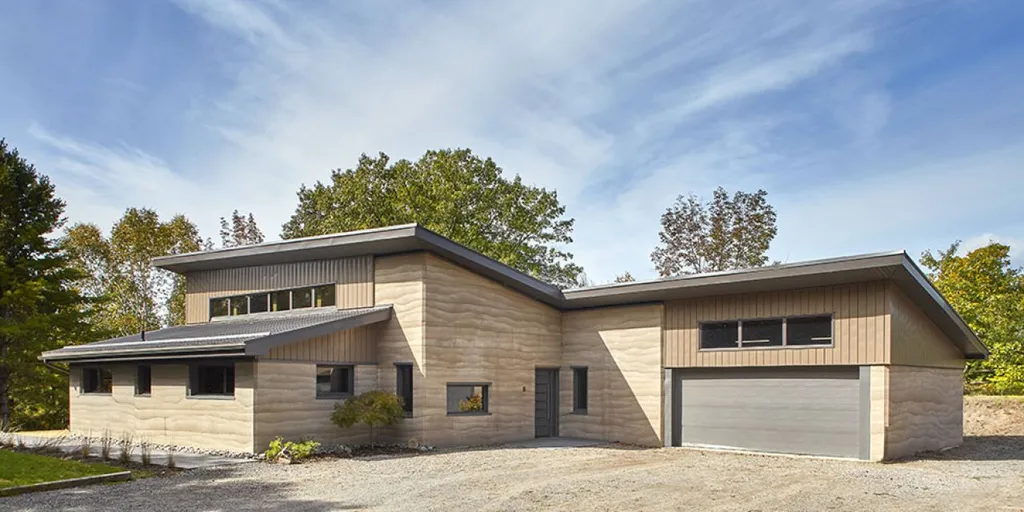In the frosty heart of eastern Canada, a humble house built from rammed earth is challenging preconceived notions about sustainable construction in cold climates. A recent study led by Gabriel Harvey from Université Laval’s Faculty of Land Use, Planning, Architecture and Design has shed new light on the thermal performance of such buildings, offering promising insights for the energy sector.
Rammed earth construction, an ancient technique enjoying a modern resurgence, is often lauded for its eco-friendly credentials. However, its performance in cold climates has remained largely untested until now. Harvey’s study, published in *Frontiers in Built Environment* (translated to English as *Frontiers in the Built Environment*), presents a detailed, three-day analysis of a cement-stabilized, core-insulated rammed earth house, providing a rare glimpse into its short-term thermal and hygrothermal behavior.
The research employed a trio of complementary methods: infrared thermography (IRT), surface heat flux sensing, and in-situ temperature and humidity measurements. The results were revealing. “We observed measurable thermal lag, reduced diurnal temperature swings, and delayed heat dissipation during unheated periods,” Harvey explained. This indicates that the house retains passive heat effectively, a crucial factor for energy efficiency in cold climates.
The study also highlighted the dynamic surface temperature responses to solar exposure, particularly on the south-facing wall. Heat flux data confirmed reduced transmittance through the composite earthen envelope, suggesting that insulated rammed earth walls could significantly cut heating demands. Moreover, indoor temperature and relative humidity remained stable throughout the monitoring period, reflecting effective hygrothermal buffering.
The implications for the energy sector are substantial. As buildings account for a significant portion of global energy consumption, innovative construction methods that enhance energy efficiency are in high demand. Rammed earth construction, with its low embodied energy and excellent thermal mass effect, could be a game-changer, particularly in cold climates where heating demands are high.
Harvey’s study, while limited in duration and scope, provides a valuable benchmark dataset that could guide future simulation-based and long-term field investigations. It opens the door to further exploration of rammed earth construction’s potential to reduce energy consumption and lower carbon emissions in the built environment.
As the world grapples with climate change and seeks sustainable solutions, this research offers a beacon of hope. It underscores the importance of re-examining traditional techniques and their role in shaping a greener, more energy-efficient future. The rammed earth house in eastern Canada is not just a dwelling; it’s a testament to the power of innovation and a symbol of the potential that lies in sustainable construction.

